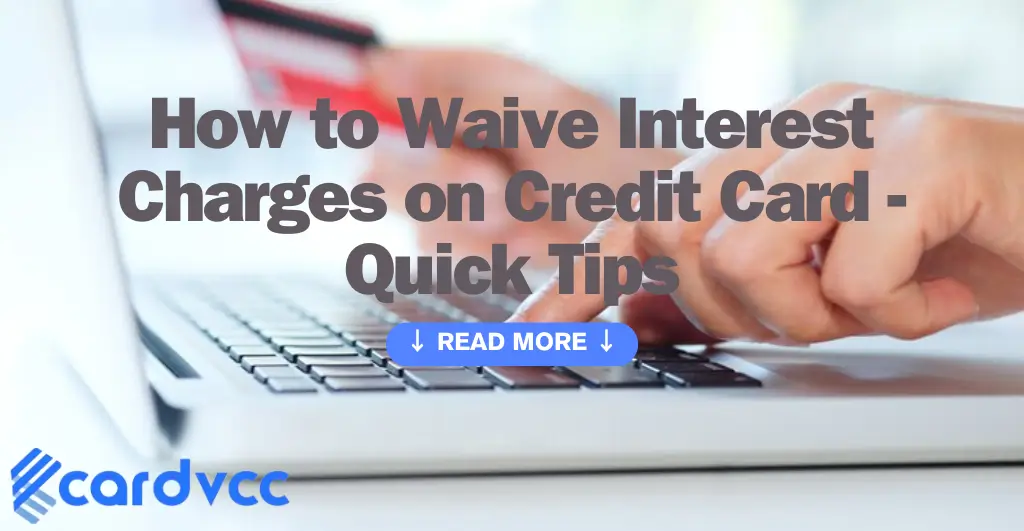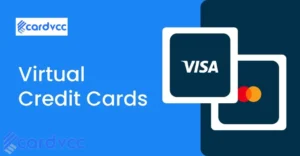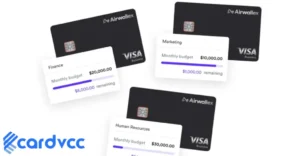To waive interest charges on a credit card, pay your balance in full each month before the due date. Contact your credit card issuer to negotiate a lower interest rate.

Credit card interest charges can quickly add up, making it challenging to pay off your debt. By understanding how to manage your credit card payments, you can avoid these extra costs. Paying your balance in full each month ensures you won’t incur interest charges.
If you’re struggling, negotiate with your credit card issuer for a lower interest rate. Many issuers are willing to work with customers to keep them satisfied. Taking these steps can save you money and help you manage your finances more effectively. Always be proactive in managing your credit card to avoid unnecessary charges.
Review Credit Card Agreement
One of the first steps to waive interest charges on your credit card is to review your credit card agreement. This document contains crucial information about your card’s terms and conditions. Understanding it thoroughly can help you identify opportunities for reducing or eliminating interest charges.
Key Terms To Look For
When reviewing your credit card agreement, focus on these key terms:
- APR (Annual Percentage Rate): This is the yearly interest rate.
- Grace Period: The time you have to pay your balance without incurring interest.
- Minimum Payment: The smallest amount you must pay each month.
Interest Waiver Clauses
Some credit card agreements include interest waiver clauses. These clauses outline circumstances where interest charges may be waived. Look for terms like “interest-free period” or “promotional APR”.
A common example is a 0% introductory APR for new cardholders. During this period, you won’t pay interest on purchases. Another example is a balance transfer offer, which often comes with a low or zero interest rate for a set period.
Below is a table summarizing these key points:
| Term | Description |
|---|---|
| APR (Annual Percentage Rate) | The yearly interest rate is charged on outstanding balances. |
| Grace Period | The time frame to pay your balance without interest charges. |
| Minimum Payment | The minimum amount you must pay each month to avoid penalties. |
| Interest-Free Period | A period during which no interest is charged on new purchases. |
By carefully reviewing your credit card agreement, you can find ways to minimize or eliminate interest charges. This can save you money and help you manage your finances better.
Contact Your Credit Card Issuer
To waive interest charges on your credit card, the first step is to contact your credit card issuer. They have the authority to help you. Speaking directly with them can lead to a resolution. You need to know how to communicate effectively to get the best results.
Customer Service Tips
When calling your credit card issuer, be polite and patient. Here are some tips:
- Have your account number ready.
- Explain your situation clearly.
- Ask for a supervisor if needed.
- Take notes during the call.
Effective Communication Strategies
Effective communication can make a big difference. Follow these strategies:
- Start with a friendly greeting.
- State your request calmly.
- Provide any necessary documents.
- Be persistent but polite.
Here is a sample conversation:
You: Hello, I need help with my account.
Agent: Sure, how can I assist you?
You: I want to waive my interest charges. Can you help?
Agent: Let me check. Please hold.
You: Thank you. I appreciate your help.
Following these tips and strategies can help you achieve your goal. Be clear and stay calm. This can make a significant difference in your results.
Request An Interest Waiver
Learning how to waive interest charges on your credit card can save you money. One effective method is to request an interest waiver. This approach involves contacting your credit card issuer and asking them to remove or reduce the interest charges. Below, we detail how to draft your request and key points to mention during your communication.
Drafting Your Request
When drafting your request, clarity and politeness are essential. Start with a polite greeting and state your purpose right away. For example, “Dear [Credit Card Issuer], I am writing to request a waiver of interest charges on my credit card account.” Be specific about the charges you want waived and mention the billing cycle.
Here’s a sample structure for your request:
- Polite greeting
- State the purpose
- Specify the charges
- Mention the billing cycle
- Express gratitude
Key Points To Mention
When requesting an interest waiver, certain key points can strengthen your case:
- Payment History: Highlight your good payment history.
- Financial Hardship: Mention any financial difficulties you are facing.
- Loyalty: Emphasize your loyalty as a long-time customer.
- Competitor Offers: Reference any better offers from competitors.
Including these points can increase the likelihood of your request being approved. Always be polite and professional in your communication.
Utilize Promotional Offers
One effective way to waive interest charges on your credit card is by utilizing promotional offers. These offers can provide significant savings and help you manage your debt better. Below, we’ll explore two main types of promotional offers: Balance Transfer Options and Introductory APR Offers.
Balance Transfer Options
Balance transfer options can help you shift your high-interest debt to a card with a lower or zero interest rate. This way, you can focus on paying off the principal amount without worrying about accumulating interest. Here’s how it works:
- Find a credit card offering a balance transfer promotion.
- Check the promotional interest rate and the duration of the offer.
- Transfer your existing high-interest balances to the new card.
Important considerations:
- Some cards charge a balance transfer fee, usually 3-5% of the amount.
- Ensure you pay off the balance before the promotional period ends.
Introductory Apr Offers
Introductory APR offers are another excellent way to waive interest charges. These offers provide a low or zero interest rate for a limited period on new purchases or balance transfers. Here’s what you should know:
- Look for a credit card with a 0% introductory APR offer.
- Understand the terms and how long the introductory period lasts.
- Use this period to pay off as much of your debt as possible.
Key points:
- Make sure you pay at least the minimum payment each month.
- After the introductory period, the regular APR will apply.

Using Virtual Credit Cards to Guard Against Cyber Fraud
In today’s digital age, online security is more important than ever. Cyber fraud is a major concern for anyone who shops or conducts business online. One effective way to protect yourself is by using virtual credit cards.
What Are Virtual Credit Cards?
A virtual credit card is a digital version of a traditional credit card. It is not a physical card, but it works the same way. You can use it to make online purchases securely.
How Do Virtual Credit Cards Work?
Virtual credit cards generate a unique card number for each transaction. This number is different from your actual credit card number. Because of this, even if the virtual card number gets stolen, your actual credit card remains safe.
Benefits of Using Virtual Credit Cards
There are many benefits to using virtual credit cards:
- Enhanced Security: Your real credit card information stays hidden, reducing the risk of cyber fraud.
- Disposable Numbers: Each virtual card number can be used only once or for a short period.
- Spending Limits: You can set spending limits for each virtual card, preventing unauthorized charges.
- Easy Management: You can manage all your virtual cards from a single account.
How to Get a Virtual Credit Card
Getting a virtual credit card is easy. You can join services like Cardvcc. They allow you to instantly create virtual credit cards. Here are the simple steps:
- Sign up for an account on Cardvcc.
- Verify your information.
- Create your virtual credit card instantly.
Guarding Against Cyber Fraud with Virtual Credit Cards
Using virtual credit cards can greatly reduce the risk of cyber fraud. Here are some ways they help:
- Unique Numbers: Each transaction uses a unique card number, making it harder for hackers.
- Limited Use: Virtual cards can be set to expire after one use or after a short time.
- Spending Caps: You can limit how much money can be charged to each virtual card.
Case Study: Protecting Your Finances
Imagine you are shopping online. You find a great deal on a website you have never used before. You worry about entering your real credit card information. With a virtual credit card, you can shop with confidence.
Steps to Take After Cyber Fraud
If you suspect cyber fraud, take these steps immediately:
- Contact your bank or credit card issuer.
- Report the fraud and cancel the compromised card.
- Monitor your account for any unauthorized transactions.
- Consider using virtual credit cards for future online purchases.
Using virtual credit cards is a smart way to protect yourself against cyber fraud. They offer enhanced security, disposable numbers, and spending limits. By joining services like Cardvcc, you can create virtual credit cards instantly. This ensures your online transactions are safe and secure.
Leverage Financial Hardship
Leveraging financial hardship can be a lifeline for many. If you face financial difficulties, you might be able to waive interest charges on your credit card. Many credit card companies offer assistance programs for those struggling financially. This section will guide you through the process.
Eligibility Criteria
To qualify for a financial hardship program, you need to meet certain criteria.
- Proof of reduced income or unemployment
- Medical bills causing financial strain
- Natural disaster or emergency expenses
- Other unexpected life events
Each credit card company has its own set of rules. Check with your provider for specific requirements.
Documentation Needed
Gathering the right documents is crucial for your application. Proper documentation can speed up the process.
| Document | Description |
|---|---|
| Proof of Income | Recent pay stubs or bank statements |
| Medical Bills | Invoices and payment records from healthcare providers |
| Unemployment Benefits | Statements showing unemployment benefits received |
| Emergency Expenses | Receipts or invoices for emergency costs |
Make sure all documents are up-to-date and accurate. This will help in getting your interest charges waived.
Maintain a Good Payment History
Maintaining a good payment history is essential. It helps in waiving interest charges on your credit card. Paying your credit card bill on time can save you money. Let’s explore how timely payments benefit you.
Benefits Of Timely Payments
- Lower Interest Rates: Banks reward timely payers with lower rates.
- Improved Credit Score: On-time payments boost your credit score.
- Better Loan Terms: A good payment history can get you better loan terms.
How Payment History Affects Interest
Your payment history has a direct impact on interest charges. Consistent on-time payments build trust with your lender. This trust can lead to waived interest charges. Here’s how it works:
| Payment Behavior | Impact on Interest |
|---|---|
| Always On-Time | Lower or Waived Interest |
| Late Payments | Higher Interest Rates |
| Missed Payments | Penalties and Higher Interest |
Keep your payment history clean. Aim to pay your credit card bill by the due date. This practice can help you avoid interest charges. It also opens doors to better financial opportunities.
Explore Alternative Solutions
Waiving interest charges on your credit card can be challenging. Fortunately, there are alternative solutions that can help you manage your debt effectively. This section will delve into a few key options: Debt Management Plans and Credit Counseling Services.
Debt Management Plans
Debt Management Plans (DMPs) offer structured ways to pay off your debt. These plans consolidate your payments into one monthly payment. This can simplify your financial obligations. Below are the key features of DMPs:
- Lower Monthly Payments: Your monthly payments can be reduced.
- Reduced Interest Rates: Interest rates may be lowered through negotiation.
- Waived Fees: Late fees and penalties might be waived.
Here’s a simple table summarizing the benefits:
| Feature | Benefit |
|---|---|
| Lower Monthly Payments | More manageable payment amounts |
| Reduced Interest Rates | Less interest to pay over time |
| Waived Fees | Elimination of late fees |
Credit Counseling Services
Credit Counseling Services provides professional advice on managing debt. These services can offer personalized plans to tackle your financial issues. Here are some advantages:
- Financial Education: Learn how to budget and manage your money.
- Debt Assessment: Get a clear picture of your debt situation.
- Negotiation Assistance: Counselors may negotiate with creditors on your behalf.
Engaging with a credit counselor can provide the following benefits:
- Educational Resources: Access to workshops and materials.
- Personalized Advice: Tailored strategies for your unique needs.
- Support System: Ongoing support to keep you on track.
Debt Management Plans and Credit Counseling Services offer effective ways to manage your credit card debt. They provide lower payments, reduced interest rates, and valuable financial education.

Frequently Asked Questions
How Do I Stop Getting Charged Interest On My Credit Card?
Pay your balance in full each month. Avoid cash advances. Set up automatic payments. Monitor your spending. Use 0% APR promotions wisely.
Can You Ask Credit Card To Remove Interest?
Yes, you can ask your credit card issuer to remove interest. Contact customer service and request an interest waiver.
Can I Ask My Credit Card To Stop Charging Interest?
You can’t directly stop interest charges, but you can request a lower rate. Contact your credit card issuer.
How Do I Dispute Credit Card Interest Charges?
Contact your credit card issuer. Explain the charges in question. Provide supporting documents. Request an investigation. Follow up until resolved.
Conclusion
Mastering how to waive interest charges on your credit card can save you money. Stay informed about your credit card policies. Regularly monitor your statements and communicate with your card issuer. Taking these steps will help you manage your finances better and avoid unnecessary fees.
Waiving interest charges is achievable with diligence and proactive measures.
Read More- Best Virtual Credit Card Providers







